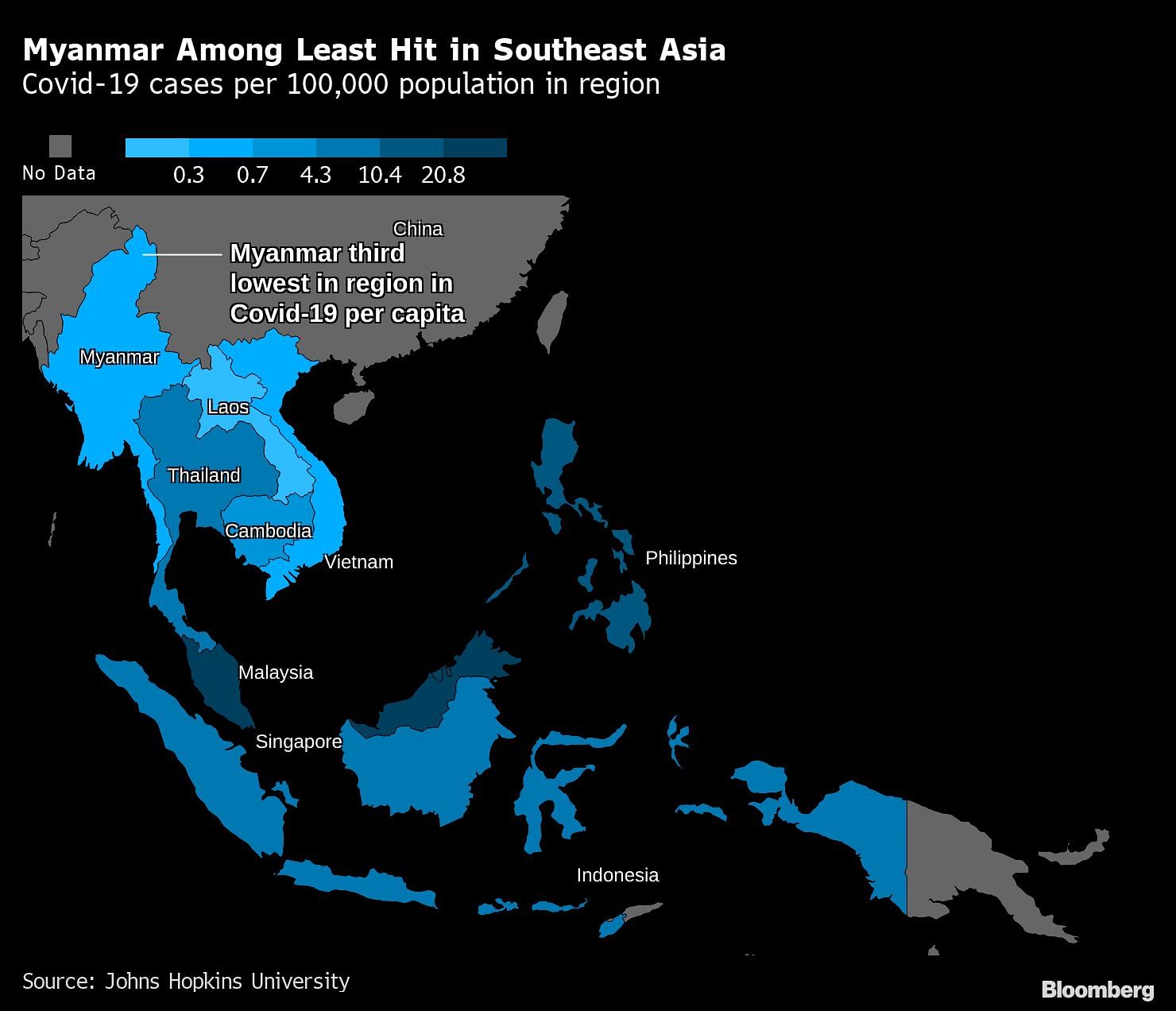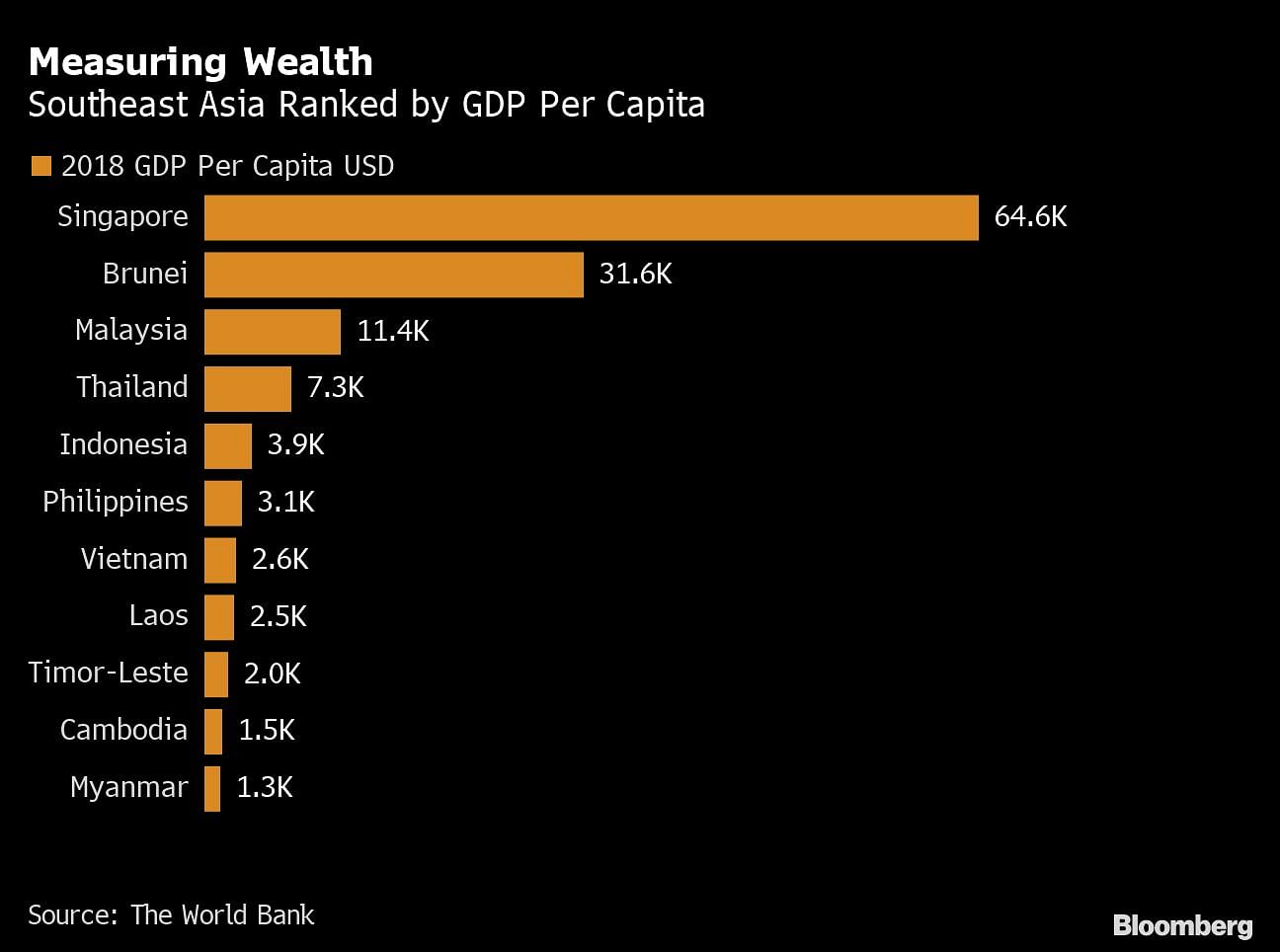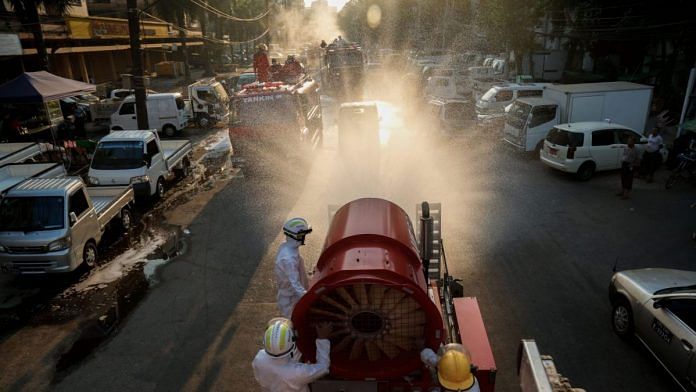Myanmar/Singapore: After Myanmar confirmed its first coronavirus infection in late March, the residents of one village in the country’s northwestern Sagaing region sprang into action.
They built bamboo tents to serve as quarantine centers, banned non-essential movement in and out, and put townsmen on guard at the main entry in rotating three-man shifts.
The small community of about 200 households had no choice but to defend itself. It has little contact from the government, according to Kyaw San Win, a 40-year-old community leader, and no access to modern health-care facilities or state funding for medical supplies and equipment.
“We decided to stand on our own feet to fight against this pandemic,” he said. “We don’t rely on public health services.”
The situation at Ngwetha Ywar Thit is playing out across the country as people take matters into their own hands in protecting themselves against the coronavirus. The Southeast Asian state, which was ruled for decades by a military junta, lacks the kind of health-care infrastructure it would need if the disease spread widely.
The government led by State Counselor Aung San Suu Kyi has taken steps to fight the virus. It began a partial lockdown in April, banned gatherings of more than five people, and stopped international commercial-passenger flights until May 15. The nation’s most populated regions have made wearing masks mandatory.
But for many people in the country, these measures aren’t enough. In the commercial capital of Yangon, hundreds of volunteers are leading a community-wide lockdown, barricading the roads of Myanmar’s most densely populated city. Local residents guard the streets, while other people spray disinfectants.
Also read: Aung San Suu Kyi finally joins Facebook — ‘to communicate with people faster’ during pandemic
‘Frail’ Institutions
The state’s “institutions are everywhere frail and in many places non-existent,” said Thant Myint U, author of “The Hidden History of Burma: Race, Capitalism, and the Crisis of Democracy in the 21st Century.” If the pandemic were to spread, “the government will be extremely constrained in terms of what more it can do,” he said.
Myanmar, a country of about 54 million people that shares a roughly 2,200 kilometer (more than 1,360 mile) border with China, has one of the lowest reported infection rates for Covid-19 in Southeast Asia, confirming just 181 cases since the outbreak began. That’s far short of the more than 25,300 in Singapore and 6,700 in Malaysia.

Part of the reason may be low testing rates. Myanmar had conducted slightly more than 12,200 tests as of Wednesday, according to government data.
The challenges faced by Myanmar show the wider issues poorer countries face in defeating the virus. The lack of resources like testing kits, robust medical systems, coordinated efforts and strong governance make them vulnerable if the disease takes hold.
In Yangon, the health ministry designated ten of the city’s 33 townships as “high-risk” areas last month after finding virus cases. While the government imposed self-distancing measures in those areas, other places took their own steps.
Aung Myint Oo, a resident of Yangon’s Yankin township, said people in his district called an urgent meeting and decided to go into a self-imposed lockdown, despite having no confirmed cases.
The 42-year-old volunteers to guard his street. Communities throughout the city are using barricades made from rope, construction tape, bamboo and large sticks tied to old tires to keep outsiders away.
“Our township is not part of the high-risk areas but local residents want to make sure that Yankin township is a virus-free zone,” he said. “We can’t wait for the authorities’ instructions. We need to protect ourselves before it is too late.”
Communities across Yangon are also creating temporary markets for basic necessities, collecting donations to buy gloves and masks, and forming groups to spray the streets with a chlorine disinfectant.
Under Control
For now, experts say the country has its virus situation under control.
“It is very unlikely that large-scale transmission has occurred undetected,” said Frank Smithuis, director of Medical Action Myanmar, a locally based medical aid organization that provides free consultations to the poor. Smithuis is also director of the Myanmar Oxford Clinical Research Unit at the Centre for Tropical Medicine and Global Health at the University of Oxford. “High numbers of severe Covid-19 would have flooded hospitals and many deaths would have followed.”
Myanmar had the lowest per-capita gross domestic product in Southeast Asia in 2018, according to World Bank data. That’s the result of decades of isolationism under a violent junta that also left the health-care system in tatters.

“We are just a poor country but when it comes to facing a disaster like this, a large number of people from all walks of life, from all parts of the country usually gather in separate groups to help fight against such a disaster,” said Minister of Commerce Than Myint, who’s also a member of the national committee that handles the country’s virus response.
But there are questions about how much more the government can do if the situation worsens.
“So far, things are still in a controllable position, but it is still too early to say that this virus can be fully contained,” said Than Naing Soe, a health ministry spokesman.
“We encourage physical distancing,” he said when asked about the barricades. “But we will neither decide nor comment on whether or not visitors’ access to streets should be blocked.” -Bloomberg
Also read: Indonesia to Malaysia — Asia is facing a trade-off between health & economic well-being






